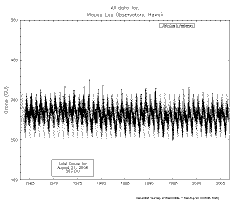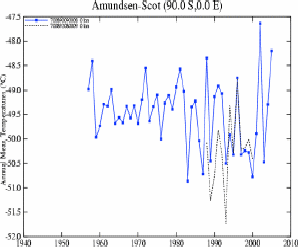Debunking the Climate Scam
Billions of Dollars -
Greedy Green Corporations -
No Warming For Two decades -
Bought and Paid For Organizations

Ozone Hole excerpts from JunkScience.com

The "Ozone Layer" -
Major 'Oops!' September 2007: Chemists poke holes in ozone theory: Reaction data of crucial chloride compounds called into question.
...
The conceptual "ozone layer" is not some delicate, static and fragile wrapping about the outer atmosphere but rather a dynamic and highly volatile component, both created and destroyed by solar radiation. Ozone creation is a continuous process, so we can not "run out" of stratospheric ozone. The more ozone (O3) is destroyed, the more free oxygen radicals (O1) are available to bind with free oxygen (O2) to create ozone (O3), the same applies with free oxygen (O2).
....
What's it all mean? Basically, sunburn is the last thing Ozone Al's Patagonian sheep and backyard rabbits would have to worry about if transported under the so-
In a paper titled "Forty Years' Research on Atmospheric Ozone at Oxford: A History" (Applied Optics, March 1968), Dobson described an ozone monitoring program that began at Halley Bay in 1956.
....
When the data began to arrive, "the values in September and October 1956 were about 150 [Dobson] units lower than expected. ... In November the ozone values suddenly jumped up to those expected. ... It was not until a year later, when the same type of annual variation was repeated, that we realized that the early results were indeed correct and that Halley Bay showed a most interesting difference from other parts of the world." [em added]
 .....
.....Is stratospheric ozone "disappearing" around the world? No. The adjacent plot is from Mauna Loa Observatory and changes, if any, are trivial compared with variability throughout the year.
Returning to "the hole", is the resultant surface UV irradiation high compared with the rest of the world? Nope, the tropics are much more heavily irradiated every single day (it's part of the "tropical paradise" thing). In fact, the bulk of the temperate zones are more heavily irradiated than the region "under the hole" every clear day of the year.
Is "the hole" of any real significance to people or the planet? Not so far as anyone can tell.
Should we worry about it? Unless you're a scientist earning a living from it, it's probably not worth a second thought.
See Here for the complete article
Addendum, August 24, 2006:
"Ozone hole stable, say scientists" - "Leading scientists in the United States say the hole in the ozone layer of the Earth's atmosphere above the Antarctic appears to have stopped widening." (BBC)
What's "normal" for the region? No one knows.
 Do these represent some sort of phase shift in Antarctica? We don't know. Nor do we know if one event caused the other but a step shift in apparent mean stratospheric ozone is a very peculiar result from a gradual accumulation of CFCs, no?
Do these represent some sort of phase shift in Antarctica? We don't know. Nor do we know if one event caused the other but a step shift in apparent mean stratospheric ozone is a very peculiar result from a gradual accumulation of CFCs, no?
See Here for the complete article
"Ozone hole stable, say scientists" -
What's "normal" for the region? No one knows.
 Do these represent some sort of phase shift in Antarctica? We don't know. Nor do we know if one event caused the other but a step shift in apparent mean stratospheric ozone is a very peculiar result from a gradual accumulation of CFCs, no?
Do these represent some sort of phase shift in Antarctica? We don't know. Nor do we know if one event caused the other but a step shift in apparent mean stratospheric ozone is a very peculiar result from a gradual accumulation of CFCs, no? See Here for the complete article